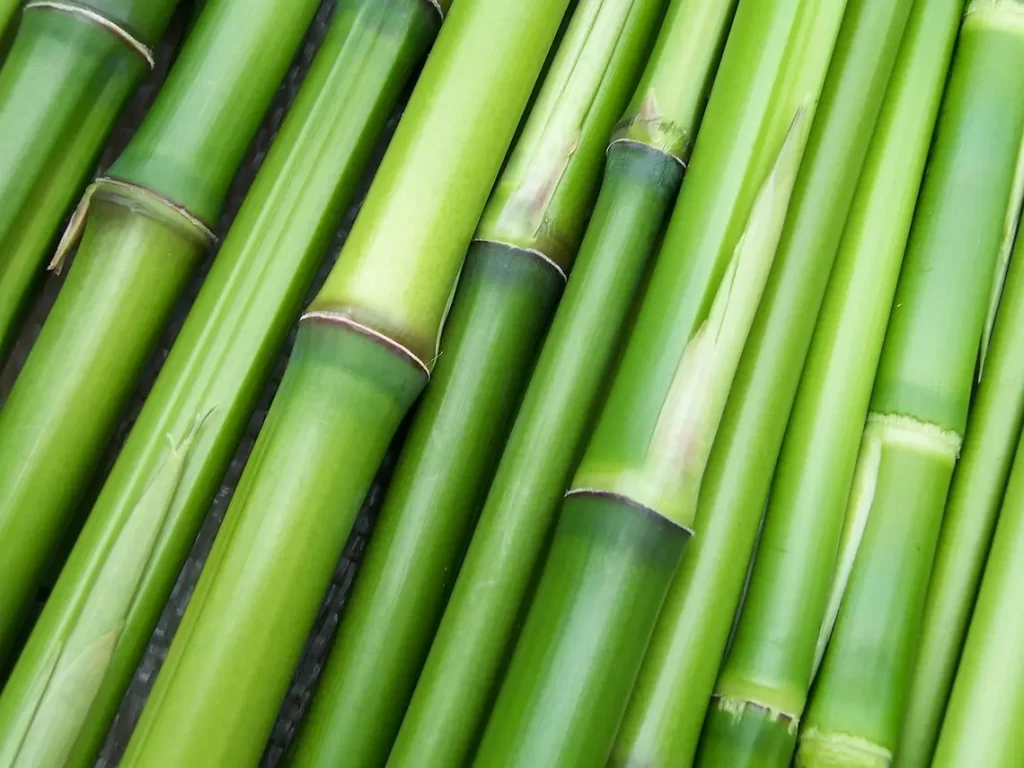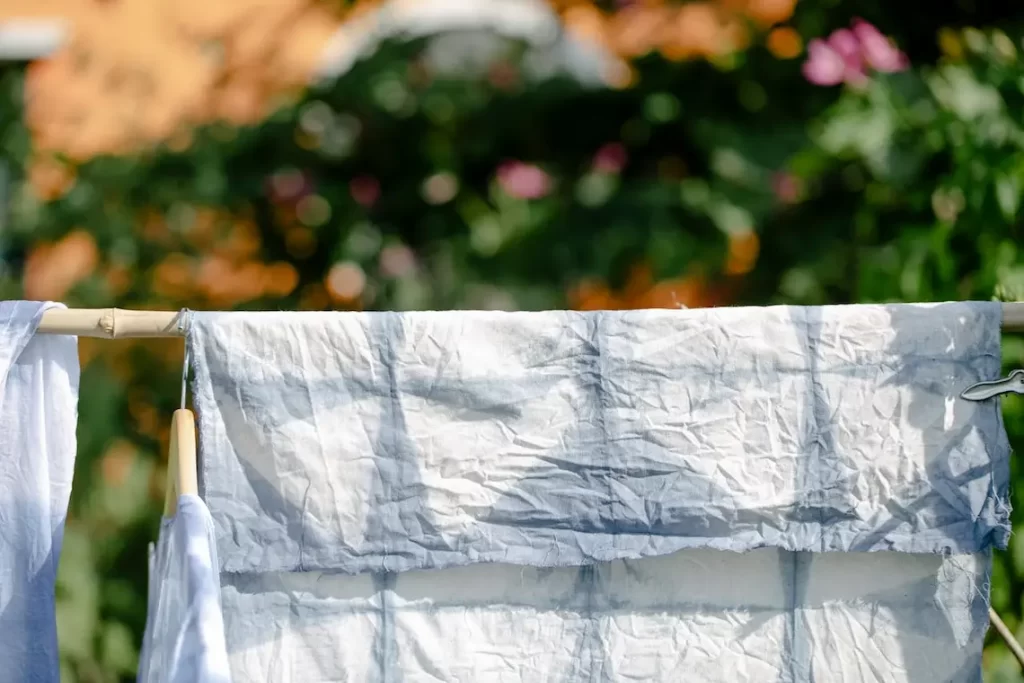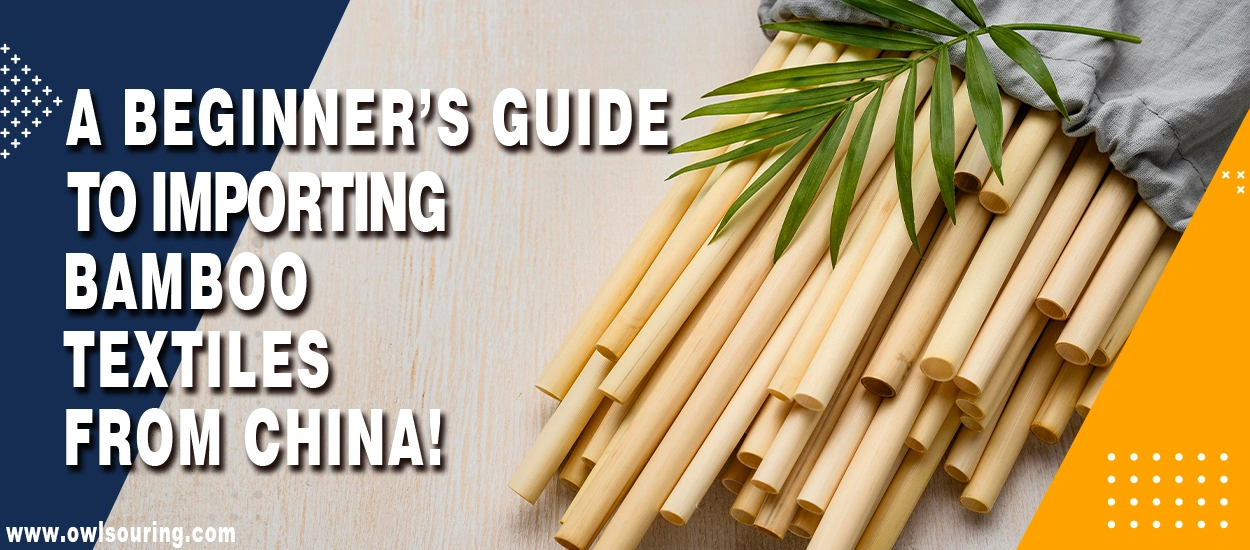Everything is changing. The fashion industry is in revolution. It is now turning to eco-friendly products, like bamboo textiles. Many businesses are looking to import these fabrics from China.
Thus, we will help you become a pro at importing bamboo textiles from China. By the end, you will have a solid knowledge to become a successful importer of bamboo textiles.
Understanding Bamboo Fabric
Bamboo fabric, prepared from the pulp of bamboo grass, is treated as one of the most versatile fabrics because of its peculiar characteristics.
Here’s an overview of its production process and properties:
Bamboo Fabric Production Process
- Harvesting Bamboo: The bamboo stalks are harvested and prepared.
- Cellular Breakdown: Stalks are crushed and soaked in a solution to break down cellular walls.
- Fiber Creation: The solution is processed through a spinneret to form fibers.
- Thread Spinning: Fibers are spun into threads, which are then woven into fabrics.
Characteristics of Bamboo Fabric
| Characteristic | Explanation |
|---|---|
| Softness | Incredibly soft, often compared to cashmere or silk, ideal for clothing worn close to the skin. |
| Breathability | Naturally breathable, promoting better air circulation and keeping the wearer cool. |
| Moisture Absorption | Highly absorbent, wicks moisture away from the skin, making it perfect for activewear. |
| Hypoallergenic | Naturally repels allergens and is anti-bacterial, ideal for sensitive skin. |
| UV Protective | Offers protection against harmful UV rays. |
| Eco-friendly | Bamboo grows quickly, requires minimal water, and no pesticides, and aids in global carbon sequestration. |
Types of bamboo textiles manufactured in China

China continues to take the first spot in the production of bamboo textiles. The country’s export rate grows every year. Many Chinese suppliers offer various options to fill different needs in bamboo textiles. Here are the main ones.
1) Viscose
This type is made up of a sticky substance. In this case, it refers to plant cellulose from bamboo used to make semi-synthetic fibers.
Many plants can undergo a similar process to produce fibers. So, viscose is not a term only for bamboo products.
Consequently, many fabrics labeled as viscose may not involve bamboo at all. Such fabrics are widely used and found in numerous applications.
2) Rayon Bamboo
This type of bamboo follows a similar narrative. Rayon and viscose both describe the creation of semi-synthetic fibers from plant matter.
The terms differ by region. Rayon is used more in the United States. Likewise, viscose is favored elsewhere.
The term ‘Rayon from bamboo’ specifically denotes bamboo as the source.
3) Artificial Silk
The term is historically used for rayon. It is still used in some regions. But, it was mainly a marketing trick.
Artificial silk bamboo is usually cheap compared to other types of bamboo. Its main properties are its silky texture. When you encounter artificial silk, it means basic rayon or viscose fabric.
However, this is unless it’s explicitly said to include bamboo. Some artificial silk products are purely synthetic and don’t include bamboo.
4) Linen
Linen is different from fabrics made from bamboo. Linen is created from the fiber of flax (a plant). Its main advantages are its strength and life. It is a natural fabric famous for being comfortable.
What’s more, this material is super breathable. It has a unique texture and often becomes soft and comfortable to use.
Bamboo Textile Imports from China with Owlsourcing
Owlsourcing ensures that the entire importing of bamboo textiles from China becomes frictionless because of it:
- Matches Quality and Budget with Reliable Suppliers: Access to the trusted network
- Negotiates Favorable Terms: Competitively pricing and favorable agreements on payments
- Quality Assurance: Inspection on the ground throughout the production phase
- Logistical Support on Shipment: Shipping, customs, delivery arrangements
- Reduces Risks: Overcoming problems created by culture, legal, and supply chains.
Owlsourcing is your local partner in China, which guarantees an efficient and successful sourcing experience. Contact us today!
4 Ways to Find Genuine Bamboo Textile Suppliers in China
Here are some strategies to get trustworthy bamboo textile suppliers.
1) Get in Touch with Sourcing Agents
Sourcing agents have ties with reliable manufacturers, including bamboo fabric makers. They also have experience in the Chinese textile industry.
They can handle communication, negotiate prices, and ensure quality control.
You can learn more about sourcing agents by reading this guide – What Is a Sourcing Agent?
2) Explore Online Directories and Trade Platforms
Alibaba and Global Sources are some common online platforms. They offer a convenient way to connect with verified bamboo textile suppliers.
Filter your search by location, fabric material, and product type. Also, you can search based on minimum order quantity (MOQ) and certifications. However, further research should always be conducted on potential bamboo textile suppliers.
3) Visit Bamboo Textile Production Hubs in China
Consider visiting major bamboo textile production hubs. You can find them in various provinces in China, such as Zhejiang and Sichuan.
Ensure you visit different bamboo textile factories. You can assess their capabilities and negotiate with manufacturers in person. Plan your trip carefully and schedule factory visits in advance.
4) Trade Shows
Attending textile trade shows in China allows you to meet many suppliers. It is a great chance to compare bamboo fabric options.
You can see fabric samples and talk with potential partners about your needs. Shows like the China International Textile Expo offer ample resources. Check this chart!
| Event Name | Dates (subject to change) | Focus | City |
| International Bamboo Industry Exposition | Usually in April | Bamboo industry as a whole | Shanghai |
| Inter-textile Shanghai Apparel Fabrics | Varies | General textile fabrics | Shanghai |
| Canton Fair | Typically held in April and October | General textiles and garments | Guangzhou |
Bamboo Textiles Labeling and Compliance Requirements
Bamboo textiles are subject to special labeling and substance compliance regulations both in the United States and the European Union. The following is a detailed summary:
Labeling Requirements
| Region | Requirement | Key Notes |
|---|---|---|
| United States | Must label as “rayon (or viscose) made from bamboo,” not “100% bamboo.” | Regulated under the Textile Fiber Products Identification Act and the Textile Fiber Rule. |
| United States | Incorrect labeling can lead to product destruction, forced recall, or both. | |
| European Union | The term “bamboo” is not permitted as a fabric description. Use “viscose” instead. | Textile labels are mandatory and cannot be omitted. |
| General | Provide suppliers with a pre-made label file to ensure compliance. | Many Chinese suppliers are unfamiliar with U.S. and EU labeling rules. |
Chemical and Heavy Metal Compliance
| Region | Regulation | Key Notes |
|---|---|---|
| European Union | REACH | Regulates substances such as lead, mercury, and other harmful chemicals in fabrics. |
| United States | CPSC substance bans; CA Prop 65 (California) | Ensures compliance with federal and state-specific restrictions on hazardous substances. |
Key Points to Note:
- Labeling: Textile labels are mandatory in the U.S. and the EU, so excluding them is not an option.
- Substance Compliance: Bamboo textiles have to meet the same substance safety requirements as other textiles in both regions.
Minimum Order Quantity (MOQ) Requirements for Bamboo Fabric
MOQ requirements for bamboo fabric tend to be less flexible. Below is a breakdown of typical MOQ requirements for suppliers:
| Category | MOQ Range | Notes |
|---|---|---|
| Per Order | 500–1000 pcs | Total quantity required for a single purchase order. |
| Per Design | 300–500 pcs | The minimum number of pieces required for each design. |
| Per Fabric | 300–500 pcs | Applies to the total quantity for a specific type of fabric. |
| Per Color | 300–500 pcs | A minimum quantity is required for each color within the order. |
| Per Size | 100–500 pcs | The minimum number of pieces required per design or product line size. |
For comparison, standard fabrics like 100% cotton generally have lower MOQ requirements since manufacturers can distribute the fabric costs across multiple buyers.
List of Bamboo Textiles Manufacturers in China
Below is a curated list of bamboo textile manufacturers in China. These companies specialize in fabric production and may not produce finished garments.
| Company | Main Products | Certifications | MOQ | Samples Offered | Location |
|---|---|---|---|---|---|
| Shanghai Tenbro Bamboo Textile | Bamboo polyester fabrics, bamboo pulp products, bamboo packaging, bedding, bathroom products | FSC, Better Cotton Initiative (BCI) | Not mentioned | Yes | Seven Floor, Building A, Lane 658, Jinzhong Road, Shanghai |
| Nantong Tianhong Textile Technology | Organic bamboo cotton blends, recycled bamboo polyester/acrylic blends | ISO 9001, ISO 14001, BSCI, OHSAS 18001, OEKO-TEX 100, GRS, FSC | Not mentioned | Yes | Room 868, Building D, Jingyang Digital Town, Chongchuan District, Nantong, Jiangsu |
| Jihua 3509 Textile | Bamboo viscose sateens, twills, bamboo comb cotton blends | ISO 9001, ISO 14001, OHSAS 18001 | 3,000 meters | Yes | No.16, Fangzhi Road, Makou Town, Hanchuan, Hubei |
| China Populus Textile | Bamboo viscose acrylic, nylon textiles, hemp viscose cotton blends | Not mentioned | Not mentioned | Yes | 7F, Metropolis Tower, Haidian East Three Street, Haidian District, Beijing |
| Shaoxing Haitang Textile | 100% bamboo viscose, bamboo polyester blends, Tetoron Cotton, Modal | OEKO-TEX 100 | Not mentioned | Yes | No.388, Building 15, Yuezhou Textile Market, Lingzhi Town, Shaoxing, Zhejiang |
| Qingdao Fab Mill | Bamboo viscose sheets, bamboo cotton twill sateens, knitted bamboo fabrics | Not mentioned | Not mentioned | Yes | Room 302, Building 1, No.43 Qutangxia Road, Qingdao, Shandong |
| Shanghai Trendhome | Bamboo polyester and cotton fabrics for bedding and hospital use | Not mentioned | 200 meters | Yes | Room 503, No.1, Lane 78, Shujian Road, Minhang District, Shanghai |
| Dongguan F.M.D Textile | Bamboo, organic cotton, hemp, and linen fabrics for footwear | Better Cotton Initiative (BCI) | Not mentioned | Yes | No.248, Beihuan Road, Baotun Zone, Houjie Town, Dongguan, Guangdong |
| Jiangxi Sinowinning Textile | Bamboo polyester, bamboo cotton blends, MJS Yarn | Better Cotton Initiative (BCI) | Not mentioned | Yes | Fengxin Industrial Area, Fengxin Town, Yichun, Jiangxi |
Quality Concerns in Chinese Bamboo Textiles
Bamboo textiles offer many benefits. But, there are potential fabric quality issues to watch out for.
1) Imbalanced Dyeing
It occurs in larger batches, resulting in inconsistent color distribution in bamboo textiles. Ask for dye samples. Specify color tolerances in your purchase agreement to reduce this risk.
2) Fabric Pilling
Pilling is typical in bamboo blends. Friction makes tiny balls of fiber on the fabric. Thus, you must choose blends with more bamboo or tighter weaves. It reduces pilling.
3) Dangerous Chemicals
Some companies use chemicals like formaldehyde to make bamboo fabric. They can affect the skin and harm the environment.
Focus on suppliers who use sustainable practices. They should have certifications like Oeko-Tex Standard 100. It certifies that the fabric is free of harmful substances.
OwlSourcing offers quality control in China. We can customize our inspection services for bamboo fabric sourced from China.
Be it pre-production inspection or lab testing! We will help you cut the risk of receiving subpar or defective bamboo textile products.
Tips to Ensure Quality Control for Bamboo Textiles in China

Evaluating a supplier’s quality control measures is crucial. Here are the key steps;
1) Request On-Site Factory Audits
An audit gives you access to a factory’s production facilities, equipment, and hygiene. Your search should focus on tidy work areas. They should have good ventilation and updated machinery.
2) Fiber Content Matters
Do not rely solely on a supplier’s claims. Get the bamboo fiber content and composition tested in independent labs. It will ensure what you get is what you paid for. Check for the labels like “eco-friendly” to ensure the fabric actually contains bamboo.
3) Colorfastness and Shrinkage Testing
Testing is crucial to ensure the fabric retains its color and size after wash. Ask the supplier for wash test results. Also, consider doing your tests for these factors. It will ensure the fabric meets your standards.
4) Finishing and Dyeing Processes
Understanding the dyeing process helps you avoid potential concerns like color fading. Look for suppliers who use natural dyes. They must also employ proper techniques to keep colors vibrant for a long time.
5) Pre-Production Samples and Approval Process
Request pre-production samples of bamboo textiles before placing a large order. It allows you to assess the fabric quality, color accuracy, and overall making.
Carefully review the bamboo textile samples and provide feedback before approving mass production. You can check this post – What Should You Expect When Shipping Samples From China?
Common Pitfalls to Avoid when Importing Bamboo Textiles from China
Importing from China can be smooth sailing if you are aware of potential roadblocks. Here are some;
1) Misleading Labels
Many fake advertisements run in the textile industry. Look for misleading claims about bamboo contents in general. Look past the labels and do some research. Choose suppliers who are honest about what they sell.
2) Lead Times
Factor in processing time for dyeing, weaving, and potential delays at customs. Plan your production schedule with realistic lead times in mind. You can discuss lead times upfront with your supplier and stay updated on production.
3) Communication is Key
Building a solid relationship with bamboo textile suppliers is essential for successful importing. You must maintain clear communication throughout the process, which significantly helps. Talk about your fabric quality expectations and discuss any issues that come up.
Read More:
- Find A Contract Manufacturing in China: Saving Money Tips
- China Factory Distribution in East of China
- Importing Clothing and Textiles from China
- Guide to Attending the Canton Fair
Final Thoughts!
Follow these steps to streamline your business’s bamboo textile importing processes. Work with suitable suppliers to maintain the fabric quality. Doing so will let you secure a place in the eco-friendly industry.
Success in importing bamboo textiles from China depends on careful research. You need to pick the correct type of bamboo. You should also find a reliable manufacturer who will use the bamboo type you want.
Of course, the process may look challenging. But, with the proper knowledge and partners, you can achieve your goals. OwlSourcing can help you source premium bamboo fabric from reliable Chinese suppliers. Choose a professional China sourcing service!



2 thoughts on “A Beginner’s Guide to Importing Bamboo Textiles from China!”
Could you please provide me with a list of suppliers for bamboo lyocell?
Thank you for your comment, Adolf! Besides searching on e-commerce platforms, you can also contact us directly.
We can assist you in finding the most suitable bamboo lyocell suppliers that meet your quality and sustainability requirements. Feel free to reach out anytime, and we’re happy to support you!